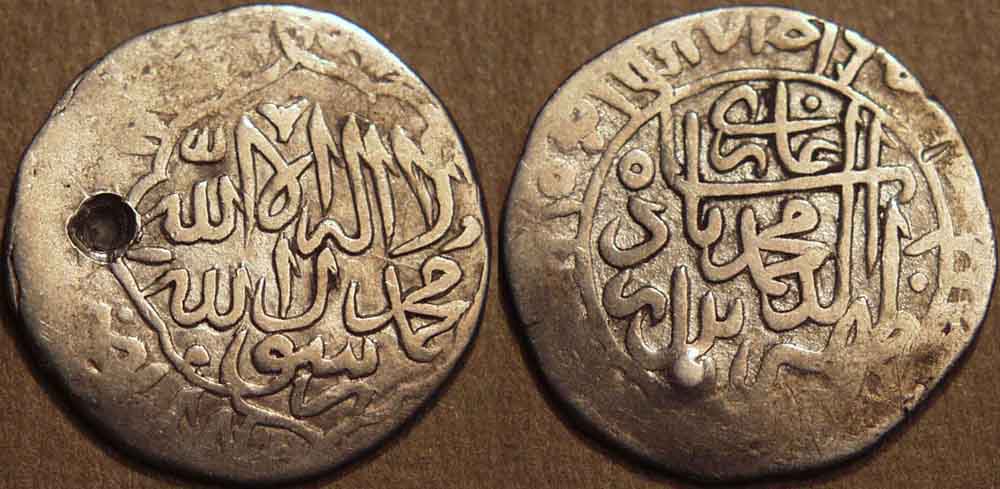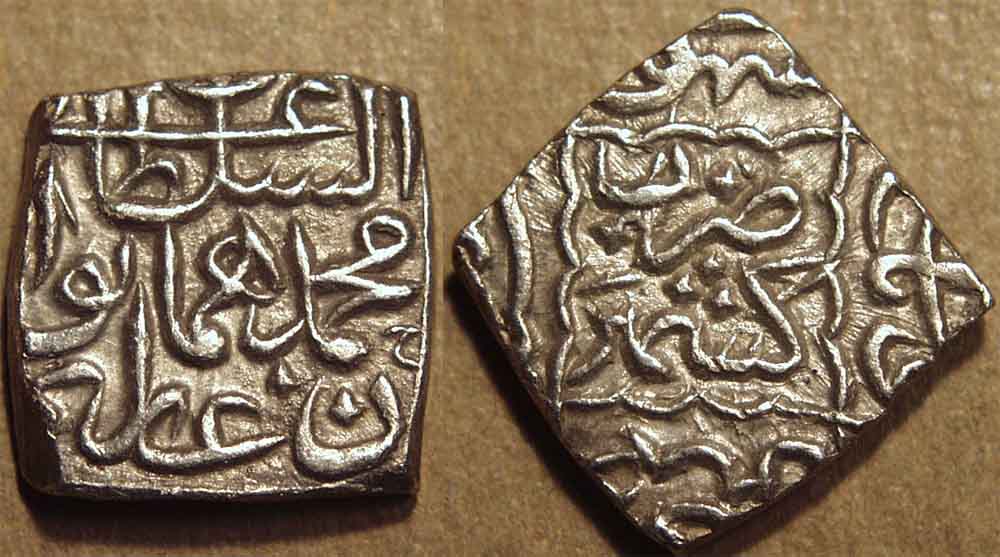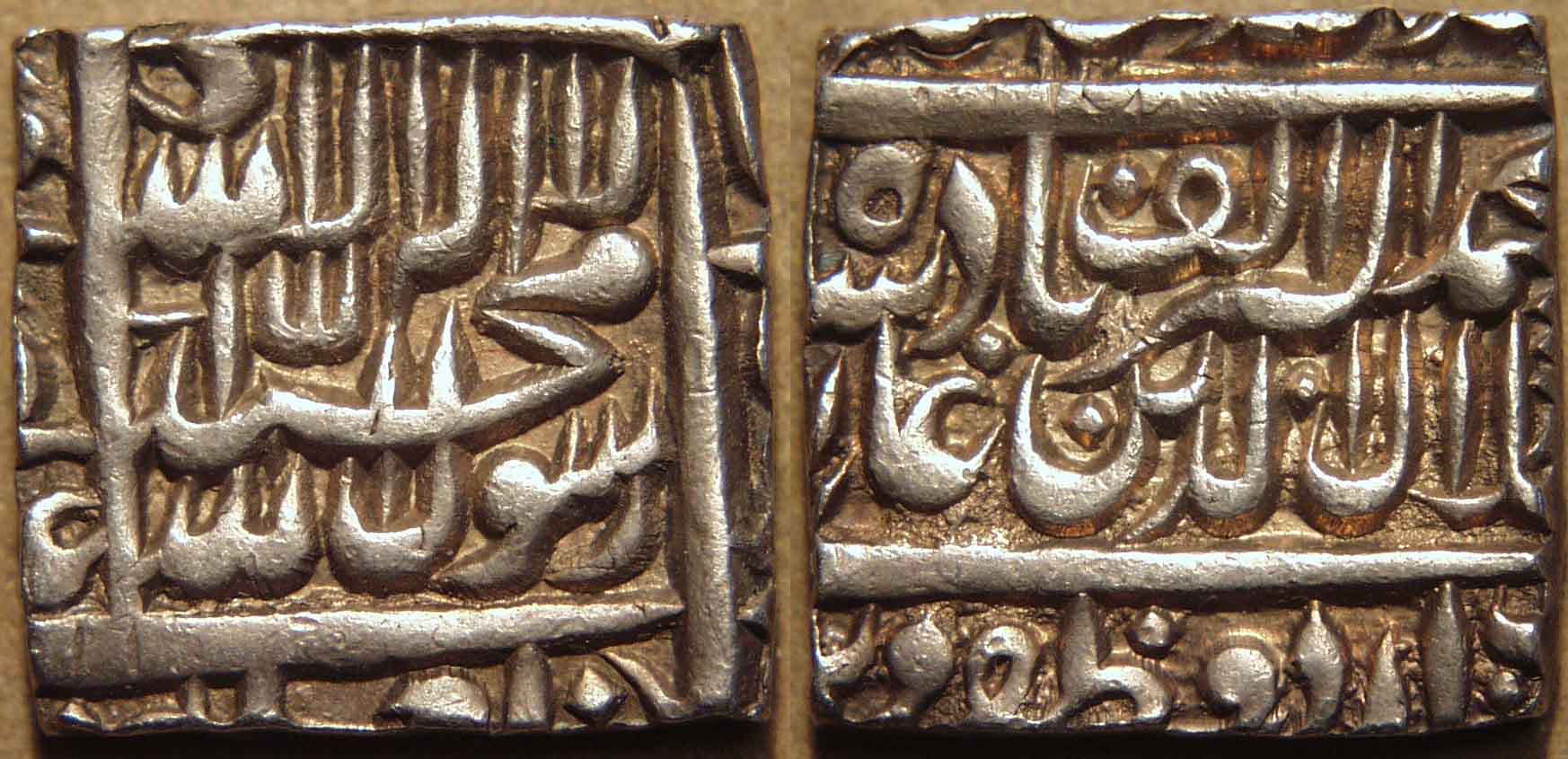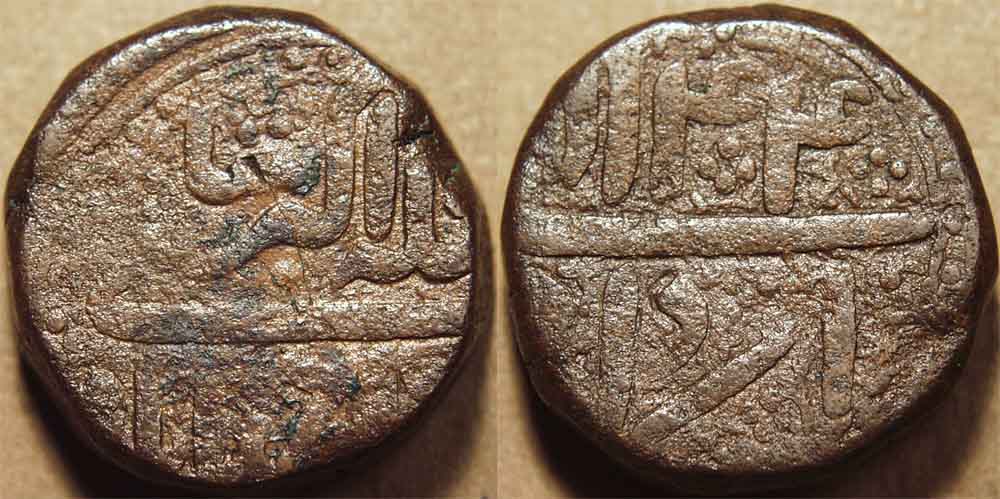
|
The Mughals hardly require any introduction, as this is perhaps the most famous dynasty in Indian history. The dynasty was founded by Babur, a descendant of both
Timur (Tamerlaine) and Genghis Khan, who was a minor prince in Afghanistan and who nevertheless was dispossessed of his kingdom. Looking for a place to make his mark,
he ended up invading India and defeated the Sultan of Delhi, Ibrahim Lodi, in 1526. He ruled until 1530. His son, Humayun, ascended the throne, but was forced to flee in 1540
by Sher Shah Suri, a general of Babur's army who had been appointed governor of Bihar and staged a rebellion against the emperor. Humayun fled to Persia and sought asylum
with the Safavid emperor, Shah Tahmasp. Eventually, in 1555, with Tahmasp's help, Humayun was able to regain his empire in India, but he died soon after.
Humayun was succeeded by his son Akbar, who was only 13 years old when he became emperor. Despite his tender age, Akbar proved to be an able ruler. He expnded
the empire and created an atmosphere of tolerance in his realm.
|
 |
Babur |

|
Babur (Zahir ud-din Muhammad), Silver tanka or shahrukhi, c. 1526-1530
Weight: 4.62 gm. Diameter: 22-23 mm Die axis: 8 o'clock
Legend /
Legend
|
 |
Babur's coinage was on the pattern of the coinage in Kabul at the time. The thin Babur coins are normally quite flat on
one side or the other. This coin is exceptional for the type in that both sides of the coin show portions of a strong strike. |
 |
 |
 |
Humayun |

|
Humayun (Nasir ud-din Muhammad), Silver tanka or shahrukhi,
c. 1530-40 and 1555-56
Weight: 4.63 gm. Diameter: 28 mm Die axis: 3 o'clock
Legend /
Legend
|

|
Haidar Dughlat (1546-50) Silver sasnu in name of Humayun
Weight: 6.15 gm., Dimensions: 15 x 15 mm.
Legend: al-sultan al-a'zam muhammad humayun ghazi /
Within central ornamental diamond: zarb Kashmir, spelled out in margins:
AH date 953 (= 1546-47 CE)
Ref: Rajgor 2853, Goron-Goenka K104 |
 |
This coin was struck in Kashmir in the name of Humayun. Haidar Dughlat was a cousin of Babur who had originally ruled
Kashmir in the name of Sa'id Khan of Kashgar. He fought for Humayun in his struggle against Sher Shah and then ruled Kashmir in his name.
|
 |
 |
 |
Akbar |

|
Akbar (Abu'l Fath Jalaluddin Muhammad), 1556-1605, Silver rupee, Agra
Weight: 11.36 gm. Diameter: 24 mm Die axis: 3 o'clock
Legend /
Legend, with AH date 979 (= 1571-72 CE)
|
 |
The first Mughal rupee! The rupee was first introduced by Sher Shah Suri, who had overthrown Humayun, and Akbar
continued the practice and converted the currency to the rupee standard. |

|
Akbar (Abu'l Fath Jalaluddin Muhammad), 1556-1605, Silver rupee, Urdu Zafar Qarin
Weight: 11.41 gm. Dim: 21 x 20 mm Die axis: 6 o'clock
Legend /
Legend
|
 |
Akbar struck these square rupees, which were called jalalah. |

|
Akbar (Abu'l Fath Jalaluddin Muhammad), 1556-1605, Silver 1/2 tanka, Malwa
Weight: 3.52 gm. Diameter: 13-14 mm Die axis: 6 o'clock
Legend, Kalima /
Legend, with Akbar's name and titles
|
 |
This coin conformed to the Malwa standard and style. |

|
Akbar (Abu'l Fath Jalaluddin Muhammad), 1556-1605,
AE tanka or double dam, Ahmedabad
Weight: 40.97 gm. Diameter: 27 mm Die axis: 11 o'clock
Legend /
Legend, with Ilahi date 44 (=c. 1598 CE)
|
 |
A massive coin, 9 mm thick! Akbar's copper coinage was based on the dam (pronounced daam; the word
daam today means "price" in Hindustani. |

|
Akbar (Abu'l Fath Jalaluddin Muhammad), 1556-1605, AE fractional dam, Malwa
Weight: 3.16 gm. Diameter: 10 x 13 mm Die axis: 7 o'clock
Legend fulus Ujjain /
Legend, with AH date alf (1000) (= c. 1591-92 CE)
|
|
|